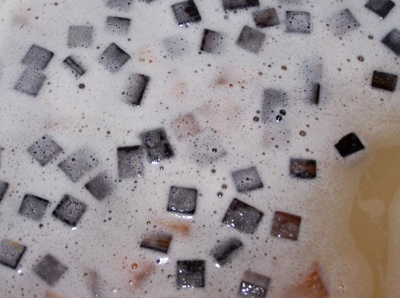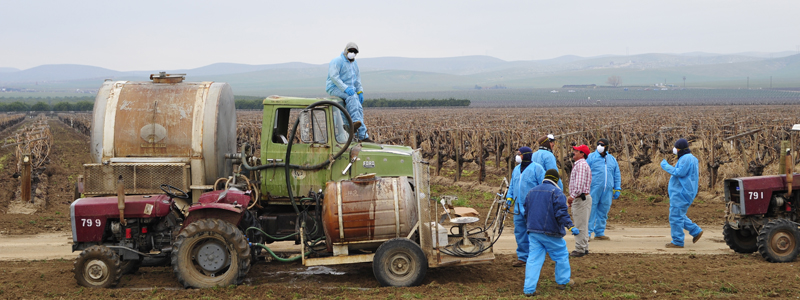Yes, wine is liquid grapes. But thinking of that magic elixir in such simple terms is like calling stalks of wheat bread. A veritable ton of complex processes happen to grapes before you drink their liquid essence, and not all of them are natural.
Like bread, wine is a shelf stable product originally intended to preserve nutrients that would otherwise go unused or rot in nature. Both modern chemical advances and growing demand for affordable wines worldwide have transformed production techniques around the world, in the same way that factory-produced bread has replaced its home-baked equivalent made from three ingredients. In both instances, food and flavor chemists have gotten in on the trend, as well as the profits, that come with industrial-sized production.
Sometimes even the most basic natural elements of wine, like yeast and tannins, are added during fermentation, while many common wine additives–like powdered yeast hulls, Mega Purple, and aroma enhancers–are never found in nature. Whether organic or obscure, most additives fall into 5 categories: anti-oxidants, tannins, acidifiers and de-acidifiers, clarifying agents, and stabilizers.
Anti-oxidants are chemicals, most commonly sulfur, which protect wines from going bad due to oxygen exposure. If you’ve left a bottle of wine open overnight, and had a sip the next day only to find it’s puckered, you’ve tasted oxidized wine. To stick with the bread analogy, sulfur is a preservative–like Vitamin C in artisanal bread, or words you can’t pronounce on a WonderBread label.

Tannins are like the nuts and seeds in hearty breads–delicious additions that add character, but aren’t an inherent or necessary element of bread. Tannins are added to wine in many ways, but normally they come via aging in oak barrels or from oak chips added to fermenting wine. Tannins are what create the dry mouth feeling that comes after swallowing a rich red wine, and they also help wines to age well. Because tannins are also found in grape skins, seeds and stems, they exist in even the most unadulterated wines.
Acidifiers are chemicals added to wine that make it more or less acidic–increasing or decreasing the lemonade-esque refreshing quality of many wines. Most often, acidity is added in the form of powdered tartaric acid, which is added to the grapes before fermentation. Because tartaric acid also occurs naturally in grapes, some winemakers don’t consider this type of acidification artificial, but many prestigious wine regions have outlawed the practice.
Crystal clear wines, like most of what lands on store shelves, are the result of complex fining and filtering processes, and are usually the chemicals that prompt wine additive debates. During fermentation and aging, grape particles are suspended in the wine, busy adding complex flavor elements to the juice. Before bottling, most producers prefer to remove these particles. Traditionally, egg whites were used to fine wine because the particles clump onto the heavy egg white and sink to the bottom of barrels or tanks. Now, clays like bentonite, milk products, and even dried fish bladders are used in fining.
The process that exempts wine from the same labeling requirements as food is sterile filtering. In short, wine is passed through an accordion-like filter with tight holes so that even the smallest bacteria can’t get through. Not only does this process make the wine crystal clear, it removes all but the most minute traces of the chemicals used in winemaking. Plus, sterile filtering removes bacteria particles that could cause the wine to spoil before reaching consumers.
The tricky part about understanding wine additives comes with the labeling laws and best practices determined by the USDA and governing bodies of the EU and other countries. These laws describe which practices are allowed–such as adding acid, or sugar, or water to wines–and which chemicals can be used in wines labelled “organic.” Normally, wineries can use any product found in nature in winemaking, including dangerously concentrated sulfur, factory-grown yeasts, and gelatin, and still label the products “organic.” While most of the chemicals are removed after fermentation, few consumers would consider wine that has been altered with so many chemicals to be organic.
These ingredients are the proverbial tip of the iceberg when it comes to winemaking, which today can be as complex and chemical-dependent as Pop-Tart production. Beyond stabilizers and acidification, winemakers can add or reduce alcohol levels, intensify a wine’s color, and transform it from Simply Orange to Sunny D. The most important rule of drinking is, and has always been, drink what you like, but not all wines are as natural as they seem.

